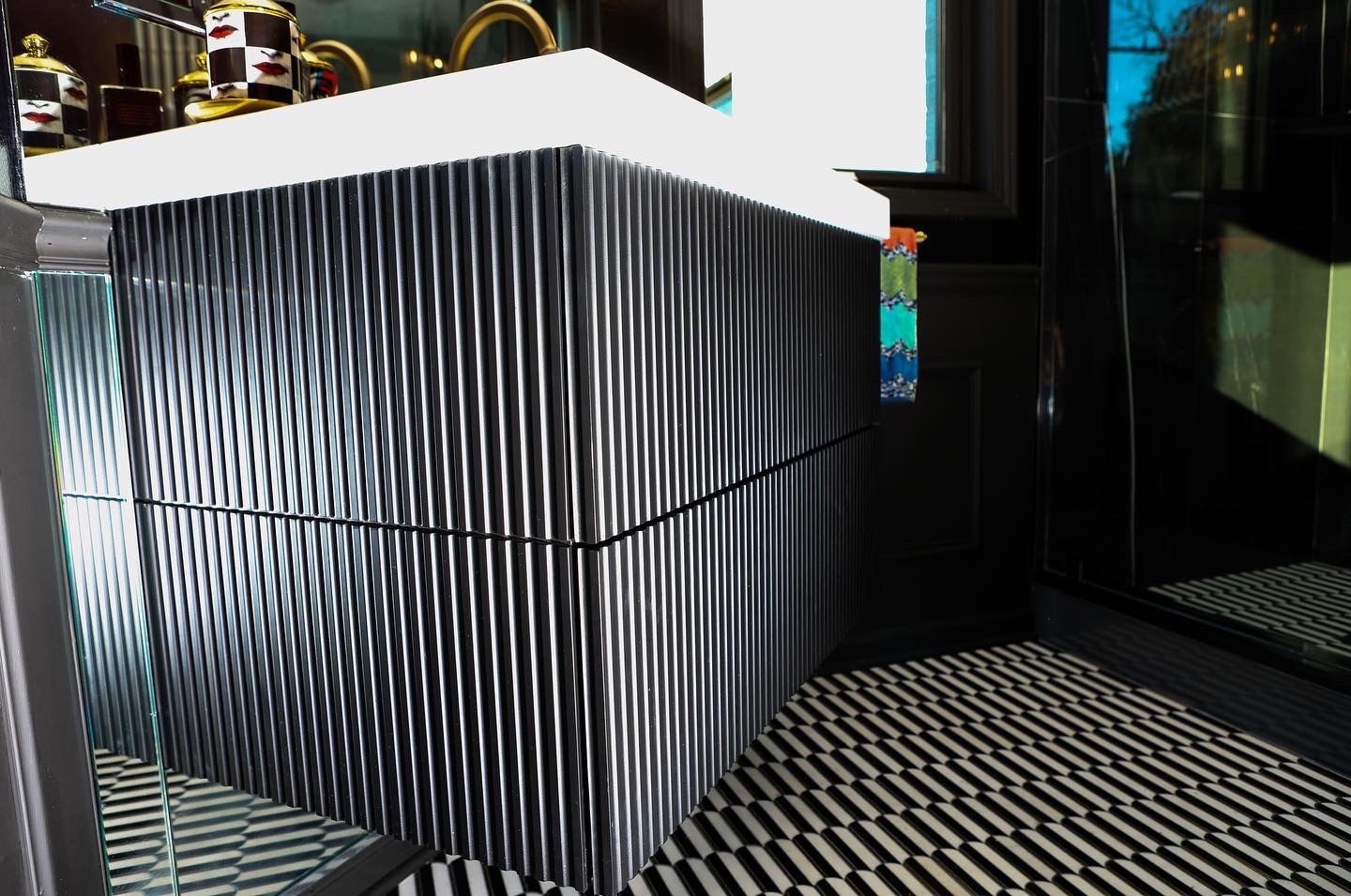Why the Size of Your Project Doesn’t Always Dictate the Cost

Many times, we receive inquiries for smaller-sized projects like bathrooms and powder rooms that the potential client claims “won’t be too expensive”. While it is a smaller space that is being remodeled, the square footage does not always dictate the price of the project. Let’s take a deep dive into some of the fixed costs that come with a remodel no matter the scope of the work being done.
When researching and preparing to renovate your home, you will discover two different pricing methods from design-builders and contractors: fixed pricing and variable pricing. While there are both advantages and drawbacks to both types of pricing, it’s important to know the difference, especially so that you’re able to stay within your budget and avoid unexpected costs that place you beyond your means.
Fixed pricing, when it comes to home renovations, generally means “lump sum” within a contract. This type of bid guarantees that a specific amount of work will be accomplished for a specific price, unless, of course, work is added, subtracted, or changed. At Areté, we typically operate under a fixed pricing contract unless changes are necessary to the project. If anything changes along the way, we must complete a change order and charge whatever the difference may be for the additional items necessary for the remodel.
Advantages of the fixed pricing method include:
- Clear and accurate total price for the project. (Surprises and unexpected expenses due to small changes almost always happen in home renovation projects, but a fixed price contract should remain relatively close to an estimated price without any option changes from the design-builder).
- Timeline incentives. In this type of work, it is to the contractor’s advantage to get the work done in a timely manner so to free up labor to move on to the next project.
- Easy bid comparisons. If you’re comparing apples to apples with a fixed price, it’s much easier to compare multiple bids before deciding on a contractor to complete the job.
- Easier lending. Banks are typically more likely to lend money for a reno project based on a fixed pricing contract.
Variable pricing, on the other hand, means that the design-builder charges for the work completed using a margin, which can vary between 10%-15% for labor on top of the cost of materials. When projecting the overall cost for a project priced in this manner, the contractor may provide an estimate upfront to serve as a guideline, but the bottom line will depend on the market cost for materials and may require quite a bit of re-bargaining if any sort of changes are made to your design and construction plans.
That said, there are quite a few advantages to the variable pricing method:
- Fewer consultant costs and delays. Because the pricing is based on the current market, there is no need to make as many decisions regarding the details before you start. Things can begin a little faster and pricing is more “fluid.” Calculating the overall cost can be a little easier in this method as well. Simply put, the cost equates to materials plus margin. That’s it.
- Less cost overall. Contractors using the fixed pricing method often include a margin in the lump sum contract anyway, so the variable or “cost-plus” method option may provide a little bit more transparency about these margins.
- If for some reason the builder is unable to complete the project, you’ve only paid for the work completed and can more easily switch over to a different contractor at any point in the job.
While both methods can be advantageous to the homeowner, based on your personality, you may be able to see more disadvantages in one method over the other. If you’re more comfortable knowing upfront what your costs are going to be, perhaps a fixed pricing contract is for you. However, if you’re a little more fickle and know your preferences may change over the course of the project, perhaps you’ll prefer to discuss variable pricing.
Now knowing all of this information, it’s important to take into consideration what this means for smaller projects. Just because your bathroom has a smaller square footage doesn’t mean the renovations are going to be cheaper based on the principles of a fixed-cost contract. The reasoning for this is that every bathroom, no matter the size, needs a toilet, sink, and shower/tub. Lighting fixtures, hardware, vanities, and other necessities are also integral aspects of any bathroom design.
You may save on tiles, but that’s about it. The same practices are used for design and labor no matter the scope of the project. A smaller bathroom project could be completed quicker depending on the intricacy of the design, but for the most part, do not expect a drastically cheaper price for a small room remodel.
Discuss Your Project With Our Chicago General Contractors
Arete’ Renovators has been a licensed General Contractor in the Chicago area since 2001 and has worked on numerous projects large and small throughout Chicagoland. Call us at 773-610-4551 to discuss your project.